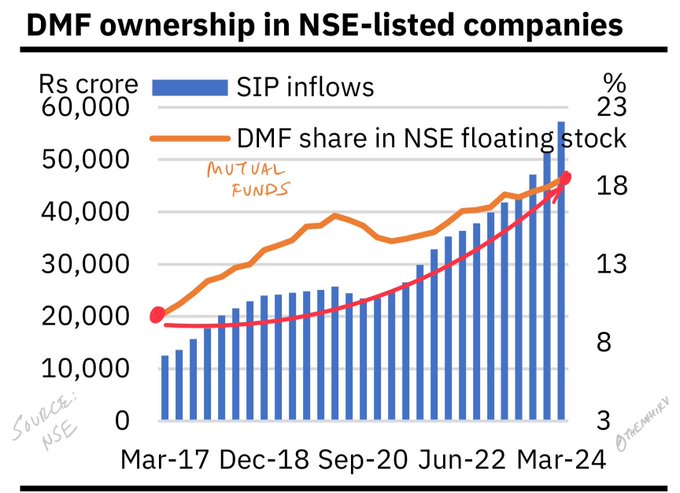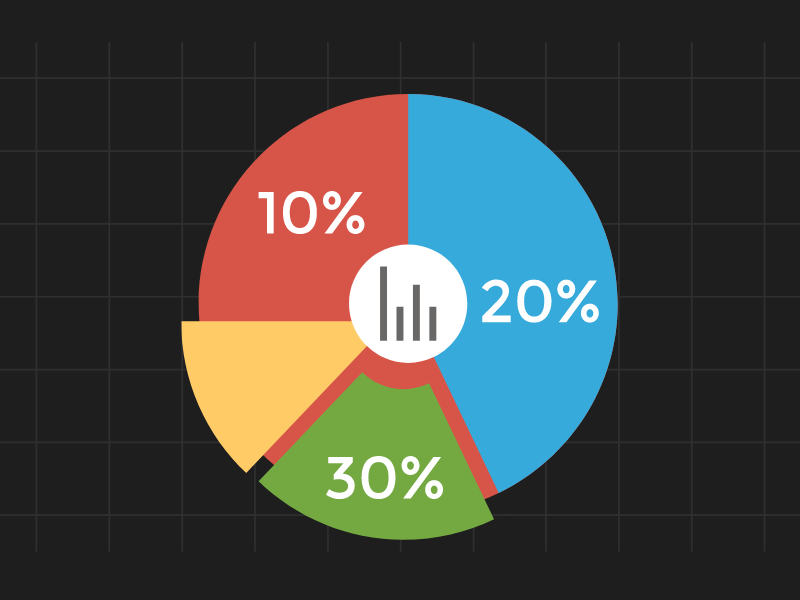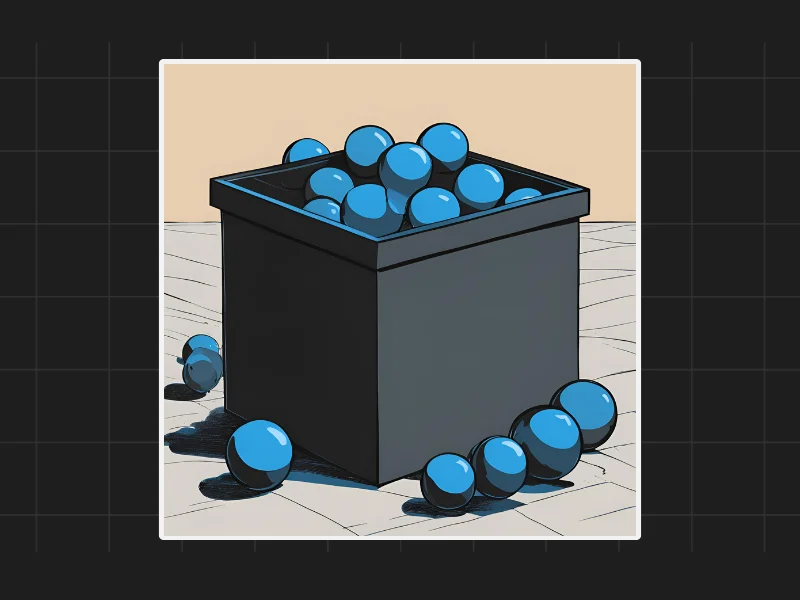Who owns India Inc.? Data shows that 52% of Indian companies are owned by private promoters, including the government. Private ownership alone accounts for 41%, while government ownership makes up the remaining 11%. Individual investors, corporate accounts, mutual funds, and insurance companies hold 24%. Foreign institutions hold 18%, and others, like Hindu Undivided Families (HUF), hold 6%. This structure means that private promoters and government ownership will likely always remain above 50%.

Foreign and Local Institutional Play
The real action happens between foreign and local institutions and investors. Foreign Institutional Investors (FIIs) once held more than 20% of the market, but this has dropped to below 18% recently. Meanwhile, domestic mutual funds have increased their share in NSE-listed stocks from 9.5% to nearly 18% over the past eight years. This shift is due to rising SIP inflows, reflecting a growing trend of local investors putting money into mutual funds.
The share of FIIs in the Indian market has seen significant changes. It was under 20% until March 2012, then rose above 22% for several years. Post-COVID, this percentage dropped below 20% and now sits below 18%. This decrease is due to a mix of long-term foreign investors and more volatile “hot money” that comes and goes quickly. The reduction in hot money is seen as a positive, providing stability when markets fluctuate.

Domestic mutual funds have shown remarkable growth. SIP inflows have increased dramatically, indicating a growing confidence among local investors. This trend has led to a doubling of domestic mutual fund share in NSE floating stock in just eight years. This structural shift shows that Indians are now more inclined to invest in financial instruments than they were in the past.

Retail investors have shown resilience, especially post-COVID. There was a fear of withdrawal by retail investors after the initial market run-up in 2021-22, but this did not happen. Instead, retail investors have displayed patience and maturity. Many who entered the market during COVID now have nearly four years of experience. They haven’t seen a deep bear market, but neither has the rest of the world. Governments tend to pump money into the economy during downturns, providing a cushion against market dips.
Future Market Outlook
The future looks stable for domestic fund flows. Even if the market takes a dive, foreign institutions are expected to provide support. The continuous inflow of money from local investors suggests a long-term structural change in how Indians view financial savings and investments. This shift is likely to sustain and even grow, making the Indian market resilient against global economic fluctuations.

Disclaimers and disclosures : https://tinyurl.com/2763eyaz
If you have any questions, please write to support@weekendinvesting.com












